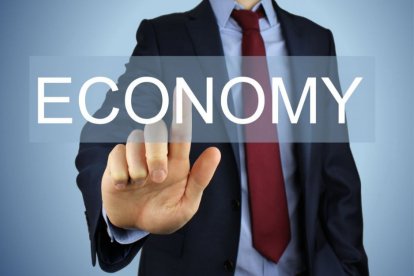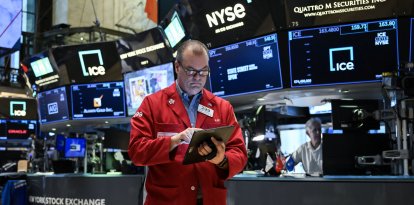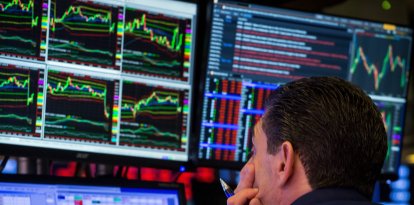What will be the main economic forecasts for 2023 in the US?
We spoke with Dr. Maria Lorca Susino, professor of economics at the University of Miami, media analyst and influential reference for the Hispanic community.

Economy by Nick Youngson CC BY-SA 3.0 Pix4free
–Question (Q): Maria, we are starting a new year and US consumers are concerned about issues that they may not be fully aware of but that they keep hearing about in the press, for example, that we are heading into a recession, that we will continue to see a slowdown or that the government will not be able to exert any control in this scenario. What do you think? What are your forecasts for all these issues heading into 2023?
–Answer (A): The economy is in a very difficult position and with some very confusing economic data.
On the one hand we have gross domestic product (GDP) data measuring economic growth in the first two quarters of 2022 as being negative, this has long been considered the definition of an economy in recession. However, in the third quarter, economic growth has been spectacular and many are talking about the end of the lean season.
But we need to look at fourth quarter (2022) GDP and other economic indicators, especially unemployment, real estate, stock markets and inflation.
For example, the negative effect on the purchasing power and the standard of living of citizens due to very high inflation, is driving up interest rates and this is what is breaking the real estate market, making the price of money more expensive which in turn, will have a knock on effect on the labor market.
–Q: Another topic that is talked about a lot and that you analyze in your networks and in your opinion pieces is the health of the labor market. What is you insight and what do you think about it. What should local, state and federal governments do to improve the health of this market. And where did it go wrong this 2022?
– A: The labor market suffered a shock in the wake of covid when everything came to a halt and people were sent home and so far, it has still not recovered. Labor participation is very low and is very worrying.
The labor force participation rate is of great concern to government economists. It reflects the number of eligible adults working or looking for work and that number now hovers around 62%. During the 1990s, a historical peak of over 67% was reached. The 'missing' 5 percent currently represents about eight million Americans who could be working but are not.
The reduction in labor force participation seems to be strongly influenced by several economic policy factors: fiscal and monetary.
With the current tax policy of the Joe Biden Administration, idleness, the result of the welfare state, unemployment insurance, disability benefits, etc., has been artificially encouraged, especially during the covid months.
The Fed and its inflationary monetary policies succeeded in injecting money during the covid period by lowering interest rates - Fed Funds - and releasing trillions of dollars in new credit. Also, the Treasury released billions of dollars in the critical covid period in early 2020.
All of this has contributed to lining everyone's pockets during the pandemic.
As all that cash was pumped into the economy it began to be spent and price inflation rose to the highest levels in forty years.
An increase in the Consumer Price Index made buying gasoline, groceries and paying bills much more difficult and more expensive, reducing the purchasing power of our salaries.
An increase in the Consumer Price Index made buying gasoline, groceries and paying bills much more difficult and more expensive, reducing the purchasing power of our salaries.
Price inflation has significantly outpaced wage rate growth, causing 'real wages' to decline in 2021-22 and increasing poverty sentiment in the US for the first time in many years.
This is a big part of the explanation for why employers and companies are paying higher wages to attract workers and yet still have difficulty finding reliable employees who now have many more opportunities.
Opportunities in the face of the crisis
–Q: In every crisis there are also great opportunities. One can think of opportunities in the real estate markets for this 2023. Where do you think there will be the greatest investment opportunities in the new year?
– A: In every crisis there are opportunities and what is called Schumpeter's creative destruction takes place. Everyone in his or her area of expertise should know that opportunities exist, but these will all depend a lot on all the factors we discussed above.
–Q: Internationally, we are living in an environment of maximum economic volatility and geopolitical tension. Do you think central banks will be able to bend rising prices and do so without causing profound damage to economies?
– A: No, I don't think so. Central banks have been injecting liquidity into the system since 2008, with the covid crisis they lost all control as I explained earlier, and together with the breakdown of the supply chain and forced unemployment they created the inflation that they have let stand for too long. They have taken action too late and too slowly. To fight against this very high inflation which was neglected for so long and as a result of so much money, any measures undertaken would result in creating a recession.
–Q: Thank you very much for your time and your explanation of what we are going through at this time. Happy New Year, prosperity for 2023 and our blessings from all the team at Voz Media
– A: Thanks to you Maria and congratulations for this Voz Media initiative. Best of luck this 2023 also to all of you.
RECOMMENDATION





















